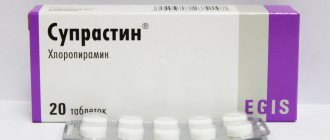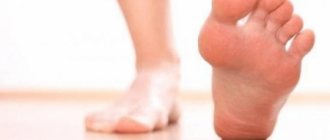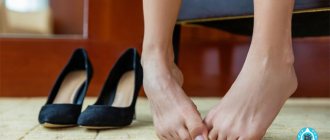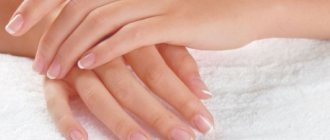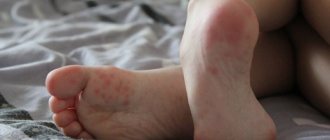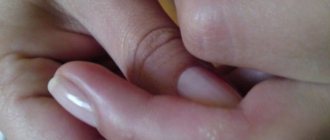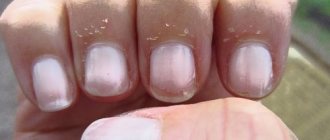Cracked toes are painful sores that appear between and under the toes. Wounds on the toes are characterized by pain, discomfort when walking, and inflammation in the area of the wound. It is important to find out how cracks between the toes occur, the causes and treatment of the pathological condition.
Cracked toes are a common condition with many causes. This problem is seasonal, occurring more frequently in the summer. The appearance of wounds between the fingers is a serious problem that needs to be treated and controlled promptly.
The development of the disorder can occur in both children and adults. The symptoms of the disease have a clear clinical picture. When examining the patient's foot, an inflamed wound surface with smooth edges and a noticeable oval-shaped wound bottom are observed. The skin around the injury is red, swollen, and there is pain at the location of the wound surface.
Causes of cracks between toes
The cause of the phenomenon in which the skin on the toes cracks and hurts can be due to exposure to both external and internal factors. In all cases where careful care does not produce results, a visit to the doctor is necessary.
Harmless cracks between the toes can be the beginning of fatal complications.
External
Among the external factors, the following are relevant:
- uncomfortable tight shoes made of synthetic materials;
- lack of hygiene and foot care;
- aggressive environmental influences during the warm season;
- trauma and microdamage to the skin of the feet due to walking barefoot;
- infection with a fungal infection.
After finding out the reasons why the skin between the toes bursts, it is necessary to take urgent measures to eliminate the problem. The earlier treatment measures begin, the greater the chance of completely curing the cracks.
To cope with foot fungus, independent efforts are not enough. A set of measures is prescribed by a dermatologist after the diagnosis has been clarified.
Fungal infections often occur after visiting a public bath or swimming pool. Using rubber shoes and treating the skin on your feet with antifungal ointments for preventive purposes will help avoid infection. Decreased reactivity increases the likelihood of fungal diseases.
Domestic
Malfunctions in the functioning of the body lead to the skin on the toes peeling and cracking.
In case of persistent relapses, it is necessary to exclude the following diseases:
- endocrine system (diabetes mellitus, pathological changes in the thyroid gland);
- digestive tract (gastritis);
- veins and arteries of the lower extremities.
The skin on the toes and soles becomes damaged (especially between the little toe and the 4th toe) if the body lacks important vitamins and minerals. A deficiency of retinol, tocopherol, and zinc has a negative effect on the condition of the skin.
The reason why the skin on your toes is cracking should be identified as soon as possible. The neglected process causes not only a violation of the integrity of the skin and its peeling, but also ulceration of the deeper layers. In severe cases, gangrene of the lower limb may develop.
Main symptoms
In the initial stages, the disease resembles common prickly heat in appearance: small pimples and redness appear on the epidermis. Over time, they begin to itch very much; when scratching, the upper layers are damaged and begin to peel off. Other unpleasant signs include:
- the formation of ulcers on the surface of the skin, which bleed heavily when damaged;
- the skin peels off and smells like cheese (in case of a fungal infection);
- After scratching, an infection gets into the wounds and the inflammatory process begins.
Peeling often occurs without itching or other unpleasant symptoms. This indicates excessive dryness of the epidermis, however, in the absence of timely treatment, the problem will only worsen.
The mechanism of occurrence of pathology
External or internal factors lead to poor circulation and degenerative processes in the epidermis. The cells of the outer layer of skin die, resulting in peeling. Oxygen starvation leads to damage to the deep layers of the cover and the appearance of cracks.
Infectious infection with a fungal infection develops when the pathogen gets on the skin surface; the risk of the disease increases with a decrease in the body's immune response.
Increased sweating is a provoking factor for the growth of fungus. Maceration of the upper layers is one of the reasons for the violation of the integrity of the integument on the toes and on top of the foot. Damage to the epidermis can also be observed in the heel area and on the crook of all toes.
Causes of itching
The most obvious cause of itching is athlete's foot, scabies, dry or wet eczema. Infection can occur through contact with contaminated surfaces in public places, household items, and also by wearing someone else's shoes. In the presence of predisposing factors, the pathogen penetrates the skin, causing irritation, burning, and bruising. The fungus most often affects the tissues around the little finger and thumb.
Diagnostics
Itching, after which the skin cracks, and subsequently becomes wet and peeling, usually indicates a fungal infection.
To determine the cause of the pathological condition, consultation with specialists will be required:
- dermatologist;
- endocrinologist;
- vascular surgeon and phlebologist;
- gastroenterologist;
- nutritionist.
The following diagnostic examination methods will help confirm the diagnosis:
- microscopic examination of the epidermis;
- sowing the collected material to confirm mycosis;
- biochemical blood test for sugar content and determination of thyroid hormone activity;
- phlebography and ultrasound scanning of veins;
- Clinical urine analysis and according to Zimnitsky to determine the excretory function of the kidneys.
A comprehensive examination is necessary when the patient also has other symptoms of the disease.
Seeing a doctor is mandatory: only a specialist will be able to determine why the skin on your toes is cracking and prescribe the correct regimen of health measures.
Hypergranulation and maceration
Maceration is often accompanied by ingrown nails and hypergranulation. The area is always wet, and therefore an infection easily attaches to the wound, which quickly moves from the side to the back, that is, the base of the nail plate. A purulent paronychia forms with pronounced redness and pain.
If timely treatment is not carried out, paronychia can spread to the finger tissue and cause panaritium, inflammation of the lymph nodes.
If maceration can be treated in a podologist’s office, then associated complications require contacting a surgeon.
Treatment options
The choice of method depends on the reason that caused the cracks. Typically, therapy is complex, i.e. includes several methods of influence.
Drug treatment
You should not start taking medications on your own. Only a dermatologist will be able to determine the indications and contraindications in order to choose the right drug.
Vitamin complexes
Dry skin, accompanied by cracks and peeling, occurs due to a lack of fat-soluble vitamins A and E. Retinol and tocopherol are suitable as monotherapy. Multivitamin complexes in tablet form are often prescribed.
It is permissible to lubricate cracked skin with oil solutions of vitamins or make compresses.
Medications
When mycosis persists, there is a need for systemic treatment; for this purpose, antimycotic drugs are prescribed in tablets. The choice of medication is made after the necessary skin scraping tests: this will make it possible to specifically influence the pathogen.
Most often prescribed:
- Ketoconazole;
- Itraconazole;
- Fluconazole;
- Terbinafine;
- Griseofulvin.
Despite the effectiveness of drugs, their use may be limited due to serious side effects. Their negative effects on the liver must be taken into account.
Ointments and creams
Local treatment agents are used as part of a complex of measures to combat fungus. The following medications are recommended for lubricating affected areas:
- Lamisil;
- Oxiconazole;
- Miconazole;
- Terbinafine.
If there is concomitant damage to the nails, the use of medicinal antimycotic varnishes for the nail plate will also be required.
Antiseptics
Products that complement the effect of antifungal drugs with a disinfectant and anti-inflammatory effect will help get rid of the fungus.
When washing your feet, it is advisable to use water with the addition of a slightly pink solution of potassium permanganate or furatsilin. Treatment with antifungal agents is successfully complemented by zinc ointment. The product should be used twice a day. Shostakovsky's balm has an antiseptic and wound-healing effect. It must be applied to the wound surface. A few days after treatment, patients note that the affected area hurts less.
Antiseptics must be used for 2-3 weeks after the symptoms of fungal infection disappear.
Folk remedies
Traditional methods of treatment are not able to cope with a fungal infection on their own, but in combination with medications it is permissible to use unconventional methods of therapy at home.
Traditional methods
For fungal infections and diabetes mellitus, special medications are used, but their effect can be supplemented with folk remedies.
Baths
Foot baths have a good effect. A recipe based on baking soda and laundry soap has already been given above. You can also prepare herbal baths from string or oak bark. The decoction is prepared in the same way:
- Take 2 tbsp. l. raw materials for 2 cups of boiling water.
- Bring to a boil again and leave on low heat for 5 minutes.
- Dilute this volume in 2 liters of water for a bath. The duration of the procedure is half an hour.
Other herbs have similar properties - chamomile, calendula, sage, coltsfoot. The proportions for preparing the decoction will be the same.
A bath with boric acid, which can be purchased at a pharmacy, is also effective. To do this you need to take 2 tsp. substances per 2 liters of warm water.
You can replace this remedy with lemon juice mixed in equal proportions with vinegar. This mixture is added to the bath water. You can add a few drops of tea tree essential oil.
Regular black tea has wound-healing and anti-inflammatory properties. For a bath it is convenient to take a packaged one. It is prepared like this: 6 tea leaves per liter of hot water. This bath is also suitable for diabetics, but the water should not be too hot. Procedures can be done every day, preferably at night, until the main symptoms disappear.
Lotions and compresses
Traditional methods involve the use of lotions and compresses. They are even considered more effective due to the high concentration of the active substance. They are recommended for use for deep cracks between the toes, especially if they take too long to heal. For the lotion you need:
- Take 10 aspirin tablets.
- Crush them and mix with 1/2 cup of ethyl alcohol.
- Add a few drops of iodine there and stir.
This product can be stored for several days, but first you need to pour it into a dark glass bottle. Lotions from this infusion can be made every day for two weeks, during which time the cracks should heal.
Liquid honey has anti-inflammatory properties. It can be applied to problem areas at night in a small amount. To enhance the effect, you need to wrap your feet in a bandage and put cotton socks on your feet. This compress will last all night. In the morning, unabsorbed residues are washed off with warm water and a nourishing cream is applied to the skin.
Prevention
Following these rules will help you avoid cracks:
- Everyday shoes should be comfortable and fit the size of your feet. It is important that it is made from natural material. In the summer, you will need to avoid contact with dust and dirt.
- Regular hygiene procedures to remove rough skin (you can use pumice stones, scrubs).
- Softening and nourishing the skin with the help of special products prevents the development of excessive dryness and the appearance of cracks.
- A balanced menu with a sufficient content of fat-soluble vitamins and microelements helps maintain the elasticity of the epidermis.
- It is necessary to avoid prolonged walking barefoot, as this contributes to the roughening of the skin of the feet and causes a violation of its integrity.
A preventive visit to the doctor will allow for early diagnosis of diseases and, if necessary, begin treatment.
The skin between the toes bursts in both adults and children for certain reasons. The appearance of a symptom cannot be ignored, as the problem may be a signal of serious changes in the body. A set of measures can completely restore the integrity and elasticity of the skin.
Treatment of plantar hyperhidrosis and fissures
Removal of the hard stratum corneum on the skin of the feet can be done in different ways. For this the following can be used:
- chemical softeners;
- disposable instruments: scalpels and hollow blades;
- polishing the skin using files and attachments.
Podological procedures require jeweler's precision from the specialist performing them: it is necessary to remove the stratum corneum, but not to harm the delicate pink skin. That is why our clinic employs podologists with medical education.
Are you worried about cracked heels? Make an appointment and get rid of your problem today!
